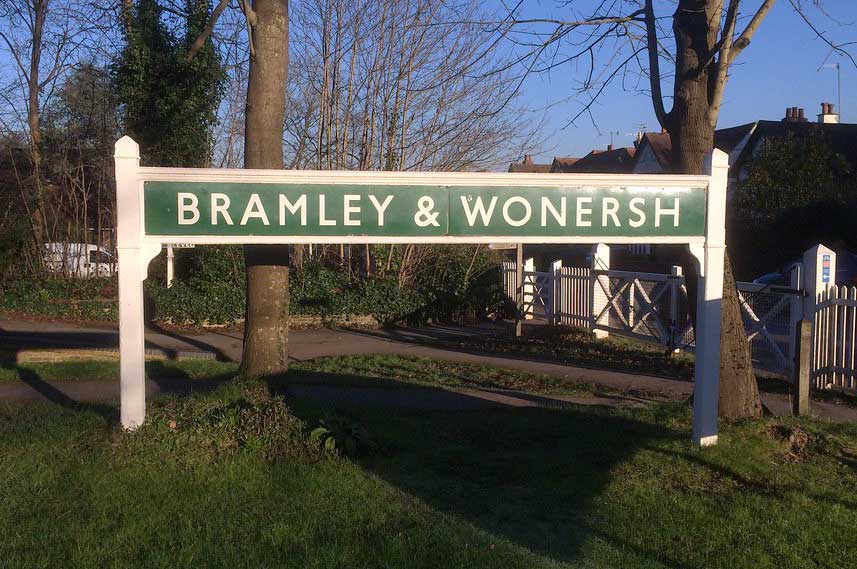Please note, this date may change due to the current coronavirus situation, but is still something to look forward to when things return to normal…
This fairly easy 8 mile walk crosses heathland dotted with pretty Surrey villages before dropping down to follow the Wey Navigation, where there are many swimming places.
Meet at Brixton tube Saturday 23rd May at 9:30am, or Waterloo 10:10am under the clock. We will then take the 10:30am Waterloo to Guildford where we will change for Chilworth arriving at 11:27am. We will return on the 5:04pm Guildford to Waterloo which arrives in London at 5:40pm.
The following text, map and pictures are taken from the Wild Swimming Walks book, Walk number 11. One of a series of thoroughly recommended publications packed with wonderful swim walks both here in the UK and abroad…
The route starts by crossing a strange mixture of wild and rather forbidding heathland of scrub and gorse, but soon gives way to gentle pastures, small woods and cosy commuter villages. UK heathland is actually very rare and precious, and this heath provides a unique habitat for ground-nesting birds and rare invertebrates among the characteristic plants like bell heather and ling that thrive on these poor, sandy soils. Once thinly populated and devoid of large villages or great houses, the weaving of coarse woolen cloth brought some prosperity to the area along the Wey in the late Middle Ages, but this cottage industry fell victim to competition from London Guilds in the 17th century, leaving high unemployment.
In the 19th century, however, when middle class Londoners began to establish weekend retreats or commuter homes along the new railway lines, the very poverty of the area was an attraction. Low land prices, romantic, uninhabited landscapes and hamlets that looked untouched by industrialisation made it a favoured destination, particularly to those inspired by the Arts and Crafts movement with its nostalgia for a preindustrial England of vernacular architecture and handmade products. The prosperous incomers renovated the crumbling remains of weaving sheds, knocked cottages together, commissioned new houses around existing villages, or arranged them in new ‘ancient’ villages. Where the work was heavily influenced by Arts and Crafts sensibilities, these 19th and early 20th century buildings are often hard to distinguish from the much older models. Blackheath village where much of the work was done by the architect Charles Harrison Townsend, is a good example.
Chilworth has a less genteel history, owing its growth to a gunpowder works established in 1625 by the East India Company. The works closed in 1920 but some buildings remain. Wonersh boasts some original early English buildings (of Bargate stone, timber-framed and tile-hung) and good Arts and Crafts architecture, as well as a lot of indif-ferent later housing. St John the Baptist’s church is worth visiting for the beautiful meadow in front and its gateway with an interesting relief, the inspiration and design for which originated with Beatrice E Lock and was developed and carried out by John Hurren, both local residents. The church, which was locked when we visited, was restored in the 18th century and again in 1902, but contains older fragments (part of the north wall is pre-Conquest and the base of the tower is 12th century).
When we did the walk in late April, village gardens were bursting with blossom, banks were covered with the white stars of stitchwort and some of the woods, particularly the one between Bramley and Cateshall, were filled with bluebells and wild garlic. In June, there were foxgloves, butter-cups, wild roses and the poisonous hemlock water dropwort. We saw swallows and house martins and heard a garden warbler and a reed bunting. Pairs of Banded Demoiselle damselflies courted along the Wey Navigation and a Small Tortoiseshell butterfly fluttered by in the warm sunshine.

Once the route joins the Wey Navigation it follows the towpath right into Guildford and almost to the station. The Wey was only the second river in England to be turned from wholly unnavigable to wholly navigable. The section from Weybridge to Guildford was opened in 1653 but the extension to Godalming was only completed in 1764. It is now used for leisure by canal barges and canoeists. Swimming is quite well established as a local pastime and two spots in particular seem popular.
The first occurs very soon after reaching the Wey, just beyond the Manor Inn, and is a tiny patch of sandy beach where someone has placed poles, presumably to warn non-swimmers not to go on into deep water. We swam here and it was a pleasant surprise. The weather had turned cold and the water looked grey and uninviting, but as soon as we plunged past the marker poles it became clear why − on warmer days − it is so popular. The water was deep and much cleaner than it appeared from the bank and even in the dull light was full of reflections of trees and sky. There is only a slight current, but one hazard to look out for is the nar-rowboats, especially those drawn by horses that have limited scope to manoeuvre.
Just after this beach there is a pretty stretch with better cover for changing but less easy access. The next main swimming place is close to Guildford and has a more extensive sandy beach and also a steep sandy bank, which looks as if children love to race down and splash into the water. There are other places too, but less suitable for children. St Catherine’s Lock 6 has lovely deep water but lacks access spots, although a little downstream there is a possible entry place.
***Please also make a note in your diary for future swim/walks on Saturday 8th August and Saturday 10th October.***



